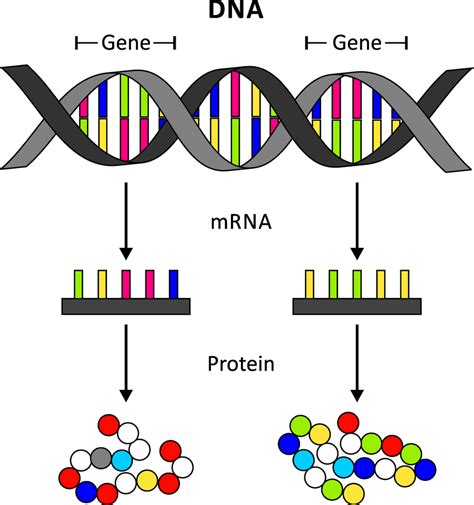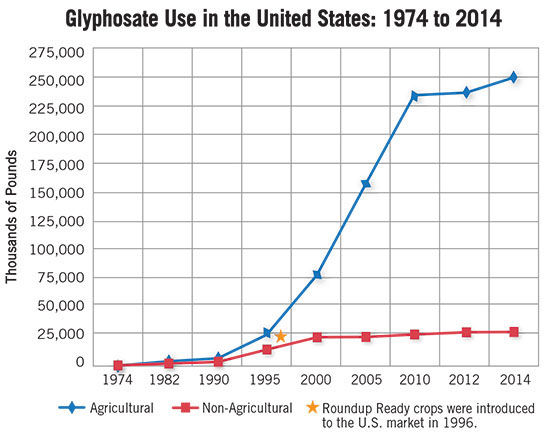GMOs & Biotechnology
What are Genetically Modified Organisms (GMOs) & Biotechnology?
Genetically modified organisms (GMOs) are organisms whose genome has been genetically altered in the laboratory in order to favor the expression of desired physiological traits or the generation of desired biological products.1 Desirable traits can be introduced into any living organism, including drought resistance in plants, slick hair coat in cattle and production of medicine by microbes.
Genes are the instruction manual that carry information for the traits of all living things. Modern technology allows scientists to take genes from organism #1 and splice them into organism #2, meaning that organism #2 will now have the characteristics from that gene. One example you may have heard of is RoundUp® Ready corn, soybeans, canola, cotton, sugarbeets, and alfalfa. Scientists discovered that some microorganisms were resistant to the effects of glyphosate, the main ingredient in the herbicide Roundup®. They subsequently cloned the gene responsible for the resistance and inserted the gene into the DNA of soybeans and later the others listed. This allowed farmers to spray the Roundup® herbicide on their crops to kill weeds without killing their cash crop because the cash crop now produced the glyphosate-resistant protein. Other examples of genetic modification include: bt corn, pollination control canola, growth rate-enhancing salmon and the first genetically modified cows approved by the FDA in 2022. In 2019, 48% of global soybeans, 32% of global corn, and 13.5% of global cotton were produced using GMO seed.2 The USDA also keeps a list of genetically modified foods available throughout the world.
Early genetically engineered products were created using randomly inserted genetic material into a host’s DNA using a “gene gun”. Over time, scientists have learned more about genetics and can pinpoint the specific location in an individual’s “genome” (all of their genes) where that gene is located. “Gene editing” is now used to insert DNA into those specific locations. CRISP-Cas9 is a modern gene editing technology that utilizes the Cas9 enzyme to snip DNA at a specific location and insert corresponding genetic material in its place.3
“Biotechnology” is technically the use of biology (living organisms) to solve problems and make useful products.4 By this definition, humans have been using biotechnology for millennia. Products like cheese, beer, and bread all require microbes to transform raw material into it’s final form. However, by the 1970’s the term “biotechnology” began to exclusively mean genetically engineered biological substances.

What is Traditional Breeding?
Humans have been purposefully altering the genes of plants and animals for millennia. In the case of plants, wild species had to put a lot of energy into outcompeting neighboring plants for resources, but also not be too desirable to animals or they would be wiped out quickly. This meant that their edible parts were often small and they contained large doses of defensive chemicals that could make humans sick. Over time, humans selected for plants that had larger edible parts than normal, did not make them sick after consumption, or produced more material for other purposes, like clothing. These seeds were saved and planted to produce next year’s crop. Often, plants from saved seeds were bred with themselves generation after generation to increase the odds of their children producing desirable traits more and more often. This is called “inbreeding” because offspring from the same parent are mated with each other to narrow the possibility of genes in the gene pool. Animals were also inbred to ensure that desirable traits like temperament, muscle mass, and breeding ability were more concentrated in the generations that followed. Inbreeding has its limits, however. Over time, a narrowing of gene diversity makes individuals weaker, while rare diseases and conditions are more likely to occur.5
“Cross-breeding” is an alternative tool in traditional breeding where individuals from two species are bred together to mix their genes and produce children with desirable, complimentary traits from both of the parents. These offspring are called “hybrids”. Examples of this include the breeding of Yorkshire and Duroc pigs, Angus and Charolais cows, and even golden retrievers and poodles, giving us a furry companion that is playful and doesn’t leave mounds of fur everywhere it goes.
In the mid-20th century, Norman Borlaug used the power of cross-breeding when he created quite possibly the most important hybrid in human history. He bred a tall Mexican wheat variety with a dwarf Japanese wheat variety to produce a wheat plant with a large seed head and a shorter stem that wouldn’t break in the wind. This is arguably the most important event in the Green Revolution.
Check out the images below to get a small taste of the difference between wild and domesticated varieties of plants and animals.


Let’s go back to the mid-1800’s to a monastery in Central Europe. A Catholic priest named Gregor Mendel was tasked with tracing the characteristics of hybrid offspring to observe if they reverted back to the original relative or if proceeding generations continued to change into new forms and even new species. Mendel cross-bred pea plants with different traits (i.e. short pea plant with tall pea plant) and observed physical changes, or “phenotypes”, over generations. Interestingly, some phenotypes disappeared and reappeared in successive generations, showing that some traits had “dominant” versions that could mask the “recessive” versions. Learn more about Mendel’s experiments in this video.
As the decades go by, new discoveries on the nature of inheritance culminate with the discovery of DNA’s double helix structure by James Watson, Francis Crick and Rosalind Franklin in the early 1950’s. Scientists then discovered the way that DNA replicates, mutates and gets passed on from parents to child. We also now understand the full process from instruction manual (DNA) to product (protein). By 1973, scientists had discovered how to insert genes from one bacteria into another, and in 1982, the FDA approved public use of human insulin produced from bacteria. This was the first genetically modified product to hit the market.6
For those interested in digging deeper into DNA (or any other topic), I always recommend Crash Course YouTube videos or Khan Academy videos and articles. Both are fantastic and free!

How does this affect regenerative agriculture?
Both genetic modification in the lab and traditional breeding aim to improve characteristics of the plant or animal by changing the genetic makeup of the organism. However, major differences arise in the mode of action between the two. The issue for me is more about the difference in the system of thinking we are employing to solve our agricultural issues. The conventional system relies on methods that require farmers and ranchers to become increasingly reliant on expensive agribusiness products. Regenerative farmers and ranchers are proving that traditional, natural methods of genetic modification can produce similarly effective or even better outcomes than hi-tech genetic modification. This should come as no surprise because regenerative agriculture’s ethos is to work with nature, not against it. Rather than pay for genetically modified corn seed to solve insect resistance, what if we figured out how to utilize the 1,700 beneficial or neutral insect species that would happily feast on the culprit? Check out articles on beneficial insects by the Ecdysis Foundation to learn more. Or what about raising your own livestock generation after generation at your location to harness the power of epigenetics, rendering the need for biotech cattle non-existent? Check out this article by Dr. Allen Williams of Understanding Ag., LLC. on the importance of epigenetics on plant and animal performance.
So, are GMOs the saviors of the planet or are they a silent plague upon the earth? It depends who you ask.7,8 One undeniable difference for me is the issue of intellectual property of a private company9 with respect to genetically modified organisms. This leads to the preposterous concept that farmers are not legally allowed to save their seed for next season and can even be sued for doing so.10 Farmers and ranchers in Europe and North America may be able to handle the expenses, but the corporate capture of farmers and ranchers is even more devastating to poor farmers worldwide11, even leading to tens of thousands of Indian farmers to protest new legislation passed by their government in 2020.12
At this point, we have to ask ourselves what agriculture is supposed to be. Agriculture to me is an art that allows producers the freedom to work with the land to improve their community and their ecosystem, while providing income from their products. I have a hunch that most farmers and ranchers would agree. It seems to me that corporatization has taken the culture out of agriculture and replaced it with uniformity and obedience in the name of “feeding the world.” Think about it: if agricultural companies could dream up a system, what would they come up with? Remember, they’ve got stock holders just like other businesses that they have to keep happy, so their dream situation would be one where every farmer everywhere is required to buy their products every year forever. It doesn’t take a large mental leap to see that agricultural companies have shaped, and are shaping, the system to make their dream come true. For example, the creation and marketing of Roundup® ready crops ensured that a farmer buy not only Roundup® ready seeds, but also lots and lots of… Roundup®! What a win for Monsanto and now Bayer.

If profitability, comparable output, and ecological health can be achieved through regenerative methods, then the whole discussion of genetically modifying organisms is drastically changed. Maybe the correct way to see biotechnologies is like medicine: it’s not inherently good or bad. It’s a tool that we should keep ready for when it’s really, actually needed so we can make sure it works at the time we need it the most. Look no further than the resistant weed issue to understand that we don’t think this way.
My opinion is that there is no way of knowing exactly what all happens when genes are spliced and diced and inserted from other organisms. The human species tends to believe with each successive generation that they have reached the apex of human understanding. We believe we can alter the world around us and have the foresight to exactly predict the consequences. I have no doubt that this hubris still holds true today and this is why I tend to lean toward preventive/regenerative healthcare and agricultural systems.
Nature will always have the last say no matter what technology we come up with. It’s time we join her team if we want to find long-lasting, sustainable solutions.
References
1https://www.britannica.com/science/genetically-modified-organism
2https://www.statista.com/statistics/262288/global-adoption-rate-major-biotech-crops-worldwide/
3https://www.ncbi.nlm.nih.gov/pmc/articles/PMC4975809/
4https://www.britannica.com/technology/biotechnology
5https://www.bbc.co.uk/bitesize/guides/z4tr7nb/revision/3
7https://share.america.gov/scientists-genetically-modified-foods-save-lives/
8https://nutritionstudies.org/gmo-dangers-facts-you-need-to-know/
9 https://www.bbcgoodfood.com/howto/guide/what-gmo-food
10https://www.calt.iastate.edu/article/farmer-sued-patent-infringement-saving-protected-seed
12https://en.wikipedia.org/wiki/2020%E2%80%932021_Indian_farmers%27_protest